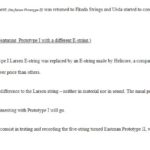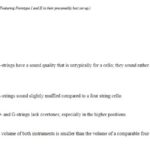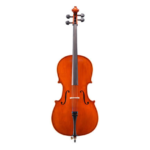- 2014-3-30
- II. START OF THE PROJECT, MEETING [4] / Adjustment of E-String; Stronger Wolf-Killer Installed
The length of strings between tailpiece and bridge was shortened by 10mm. (This lowers the tension of the strings and is supposed to soften the sound of the higher strings slightly.) Additionally, a heavier wolf-killer (9 grams) was attached to the G-string.
TEST RESULTS [4] (Featuring fine-tuning pegs, lighter tailpiece, reduced string distance between tailpiece and bridge, heavier wolf-killer.)
The nasal quality of the E-string changed a little to the better and the difference of sound quality between A- and E-string is now considerably less evident. Still, the instrument seems to have less resonance than a comparable four-string cello.
Since the sound properties were a little bit disappointing the team consulted about other possible reasons and ways to obtain a better level of sound quality. Both Amati’s and Stradivari’s five-string cellos were smaller than their four-string models, so the team decided to build a second prototype in a size similar to the old masters’ instruments. As a result the team ordered another low-priced four-string cello, this time in a size (7/8 as compared to the usual 4/4) as close as possible to the smaller Amati and Stradivari five-string cellos.





